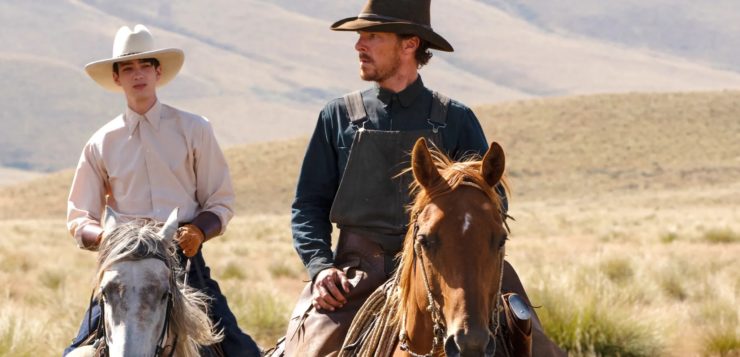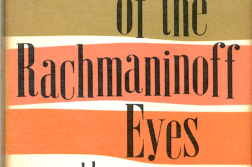A SCENE in Jane Campion’s film The Power of the Dog took me back to the years I spent growing up in Montana, where the story is set. Peter Gordon, a boy in his teens whose widowed mother has married one of two brothers who own a large cattle ranch, walks past the open tents where men who have spent the day haying are resting. The men begin to whistle, “the whistle men give to a girl,” as it is described in the novel on which the film is based. Peter is wearing white tennis shoes. He talks with a lisp and walks stiffly with a slight twitch of his hips. In other words, he does not belong on this ranch. But Peter doesn’t falter, and once he’s past the tents, he returns the way he came. This time there are no whistles. As enacted by Kodi Smit-McPhee, the scene took my breath away. I walked a version of this gay gauntlet a number of times growing up. In the place where I came of age, I did not know how to fit in, but what gave me the courage to keep walking was the conviction that some day I would leave Montana and find where I did belong.
Peter Gordon is in some ways a self-representation for Thomas Savage, the author of the novel The Power of the Dog (1967). Savage was born in 1915 in Salt Lake City. When he was two, his parents divorced. Three years later, his mother, a member of a powerful Idaho sheep ranching family, married a wealthy Montana cattle rancher. Savage grew up on these two ranches. Unlike Peter, the handsome and gregarious Savage could act the cowboy. He was so skilled with horses that he considered a career as a rodeo rider. But for some reason, Savage found Montana oppressive, and in 1937 he left to become a New Englander and a writer. In his fiction, however, Savage never abandoned the West. Eight of his thirteen novels are set in southwestern Montana. His most memorable characters are based on members of the two ranching families that raised him.

From his first novel, published in 1944, to his last in 1988, Savage received overwhelmingly stellar reviews. His books, however, sold poorly. This may be because he painted a grim picture of the West as a lonely, provincial, brutal place, something that did not appeal to readers looking for heroic cowboys and scenic grandeur. Savage peopled his books with some gay characters, usually in secondary roles or described in highly coded language. Phil Burbank, the character played by Benedict Cumberbatch in the recent film, is an example of the latter. The novel, set in 1925, was published in 1967, two years before Stonewall and Gay Liberation, and Savage was unable to do more than hint at the repressed sexuality of his central character. This may be due to the fact that Savage himself was gay. He knew this from an early age but opted to marry and have children. His mother’s large and colorful family in particular made an indelible impression on him. He could not conceive of a life without gatherings of multiple generations of a family reminiscing at summer picnics and holidays about their shared past and deceased kin.
In 1960, Savage had a brief affair with a man twenty years his junior. His wife and teenage children were aware of this and did not take it well. Savage made the decision to end the affair after eighteen months. He would not return to anything resembling a gay life until 1990, after his wife’s death, when he was living in San Francisco (he died in 2003). Only two of his novels are now in print. Savage was troubled by his sexual orientation and the dangers it presented for him personally and professionally. This is powerfully represented in Phil Burbank, one of the memorable figures in 20th-century American fiction. From the beginning of Power of the Dog, Phil is obsessed by Peter—first, because he sees in this sissy boy everything he hates in a man, and also because Peter makes him feel something for another man that he felt only once before, and it broke his heart. In Phil, Thomas Savage may be demonizing a part of himself.
Jane Campion’s film is more explicit about Phil’s repressed homosexuality than is the novel. For the most part, this is done visually, as in the scene where Peter discovers Phil’s trove of homoerotic magazine photographs, and in the final scene between the two men in which Phil tenderly places his hand on Peter’s neck, as though he were about to kiss him, and later when they exchange a shared cigarette. None of this occurs in the novel.
Many reviewers have used the expression “toxic masculinity” in discussing the film. I think it’s important that this expression, which has no precise definition, not be understood as implying a stereotypical “gay villain.” Repressed same-sex desire is but one part of Phil’s fraught character. He is a misogynist, a bully, and a bigot, intolerant of people he sees as inferior, a man whose lack of self-awareness drives him to a life of indiscriminate malice. Phil is a flawed human being. This was not the inevitable fate of the gay men and women who lived in the West in the first half of the 20th century. Many of us knew and accepted who we were, and we refused to become victims of a place that was hostile to our existence.
Daniel A. Burr, a frequent contributor to this magazine, is based in Covington, Kentucky.






